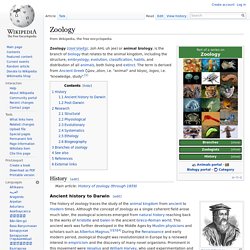

The End of the University as We Know It. In fifty years, if not much sooner, half of the roughly 4,500 colleges and universities now operating in the United States will have ceased to exist.

The technology driving this change is already at work, and nothing can stop it. The future looks like this: Access to college-level education will be free for everyone; the residential college campus will become largely obsolete; tens of thousands of professors will lose their jobs; the bachelor’s degree will become increasingly irrelevant; and ten years from now Harvard will enroll ten million students. We’ve all heard plenty about the “college bubble” in recent years. Some Fascinating Poison Dart Frog Facts. Toxic Amphibians: Dart Frogs of the Amazon Forest Poison dart frogs of the family Dendrobatidae are found in tropical forests of Central and South America.

Their name derives from the fact that indigenous hunters would tip their blowgun darts with the toxins produced by the frogs. The poisons are thought to be concentrated from the alkaloids in plants eaten by the ants and other insects that the dart frogs prey on. Captive bred frogs are not poisonous, since the flies and crickets that form their staple diet are not fed poisonous plants. The golden poison frog, Phyllobates terribilis, found mainly in Colombia, is the most toxic frog known. The bright colours of dart frogs act as warning to predators The frogs are some of the most brilliantly coloured amphibians. Discovery News. Zoology. Zoology (/zoʊˈɒlədʒi/, zoh AHL uh jee) or animal biology, is the branch of biology that relates to the animal kingdom, including the structure, embryology, evolution, classification, habits, and distribution of all animals, both living and extinct.

The term is derived from Ancient Greek ζῷον, zōon, i.e. "animal" and λόγος, logos, i.e. "knowledge, study".[1] History[edit] Ancient history to Darwin[edit] The history of zoology traces the study of the animal kingdom from ancient to modern times. Over the 18th and 19th centuries, zoology became an increasingly professional scientific discipline. Post-Darwin[edit] These developments, as well as the results from embryology and paleontology, were synthesized in Charles Darwin's theory of evolution by natural selection.
Research[edit] Structural[edit] Physiological[edit] Animal anatomical engraving from Handbuch der Anatomie der Tiere für Künstler. Evolutionary[edit] Systematics[edit] Many scientists now consider the five-kingdom system outdated. Biology. Space science. Physics. Earth Sciences. Philosophy of science. Philosophy of science is a branch of philosophy concerned with the foundations, methods, and implications of science.

The central questions concern what counts as science, the reliability of scientific theories, and the purpose of science. This discipline overlaps with metaphysics, ontology and epistemology, for example, when it explores the relationship between science and truth. There is no consensus on many central problems in philosophy of science, including whether science can reveal the truth about unobservable things and whether scientific reasoning can be justified at all.
In addition to these general questions about science as a whole, philosophers of science consider problems that apply to particular sciences such as biology or physics. Some philosophers of science also use contemporary results in science to reach conclusions about philosophy. Today, some thinkers seek to ground science in axiomatic assumptions such as the uniformity of nature. Introduction[edit] Prince Rupert’s Drop: The Curious Properties of a Molten Glass Blob Dropped in Cold Water. So this is completely amazing.

Destin from Smarter Every Day stopped by Orbix Hot Glass in Fort Payne, Alabama to explore a fascinating phenomenon called a Prince Rupert’s Drop. Apparently when molten hot glass is dropped in cold water it forms an object that’s almost completely impervious to brute force, even a sold hammer strike to the center of the teardrop-like shape won’t break the glass. Yet gently cut or even bump the tip of the drop and suddenly the entire thing shatters in an explosive chain reaction traveling at a speed of over 1 mile PER SECOND. Watch the video above to see the effect in 130,000 fps glory.